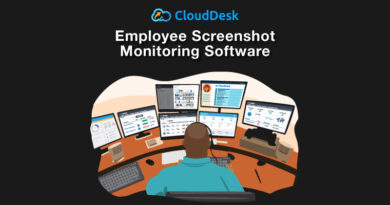How to Support the Wellbeing of Your Remote Employees
Having observed that many businesses can be run successfully with a team of distributed employees who work from home, it is not surprising that more companies are shifting to flexible or remote working options. In fact, according to a Gartner Inc survey, 82% of business leaders plan to allow their staff to work remotely. Although remote work brings a lot of benefits, it is difficult for many employees to create work life balance when working from home. The mental health of remote workers is also another top priority for companies as they know remote work can only be successful when they can create a great company culture. Remote and flexible working opportunities are highly appreciated by employees, but the loss of office environment causes feelings of isolation which can create serious impacts on mental health.
To protect the wellbeing of your remote team, employers have to foster a more positive and collaborative approach to stand out and create a great employee experience. As a business owner or manager, it is your responsibility to ensure the wellbeing of all your employees no matter from where they work.
Here we highlight how to support the wellbeing of your remote employees and help them perform at their best.
5 simple ways to support the wellbeing of remote workers
1. Establish boundaries between work and personal time
Working from home eliminates the daily commute which means there is nothing to define leaving the office and returning back home at the end of the day, which makes it difficult to separate work time from personal time. Technology has allowed people to maintain seamless communication 24/7, and remote workers have the tendency to be extra responsive to prove their dedication to work. This continuous process of being in touch with work causes employees to feel like they are always in work mode. This increases stress in an employee’s personal life because they have less time to invest in their personal affairs, and less time for their family and friends.
So, creating a boundary between their work life and personal life is extremely important for their wellbeing. Managers must encourage employees to shift gears once their work hours have ended and let them know there is no need to respond to messages until the following work day. Let your employees know you trust them enough; you know about their dedication and the importance of having a good balance — your employees will feel relieved to switch off at the end of the work day to have time for their personal lives. This will help employees to get fully recharged for the next day to perform efficiently.
2. Socialize virtually and really listen
To manage a team of remote employees, you need to work harder to maintain a good relationship with each of your employees so that they always feel welcome to discuss their problems with you. For your virtual employees, it is important to have a one-to-one session by phone or video call at least once every week. These sessions will help you get to know your employees better, you can have open discussions about work and know what they are dealing with. With these chats, you have to really make sure you are listening to them, as this is a part of your duties. You may sound too impersonal and uncaring if you ask them the same general questions every time. Try to greet them with a welcoming tone and more importantly try to understand what is behind the pauses in the conversation.
The main purpose of this one-to-one should be to encourage your employees to share their problems and provide help and support to them. This helps to build trust and helps you to work together with improved productivity.
3. Encourage breaks
Working without any breaks leads to increased stress levels, damages physical health and lowers productivity. Encourage your employees to take short tea/coffee breaks during work and introduce a communication channel where team members can let each other know when they take a break. The benefits of allowing your employees to take a break is that it refreshes them and prepares them to tackle their task smoothly. Instead of spending idle time sitting in front of the computer doing nothing it is always wiser to take a break and come back to work with full potentiality. It creates a healthy working environment for employees when they have the opportunity to take regular breaks which benefits their mental and physical wellbeing.
4. Set realistic goals
It is hard to track the workload of remote employees, which is why remote employees often work harder and longer hours to keep up with performance goals and experience greater stress levels as a result. On the other hand, if your remote employees do not have goals or targets to achieve, they will feel disengaged. To bring a balance, work with your team members and set achievable goals with deadlines. By setting realistic goals you can take away pressure of unrealistic deadlines that may have caused them to work overtime. No matter how big or small the goals you set are, you have to keep checking their progress to ensure they are working productively.
5. Be open to flexible working
As your employees are working from home, you have to accept the fact that they face certain distractions in their daily life. They may have kids or elderly family members living with them. Do not expect them to always start and finish work at the same time. Give them the flexibility to start work a bit late somedays, you can also set a window of 8am to 8pm for your employees to finish their tasks. They can choose any 8 hours between this time frame to finish their tasks. Flexibility benefits everyone, when employees get benefits they are sure to perform better.
As you go through this process to support the wellbeing of your remote employees, you can make your job easier with software to manage a lot of other things tasks for your remote teams. Employee monitoring software can help you monitor remote employees easily. With real-time monitoring features you can see when they clock in to start work and when they clock out. The software lets you manage teams without micromanagement, from tracking time to productivity metrics you get all the reports under a single dashboard for all your distributed team members, making managerial tasks easier for you. The use of monitoring software for remote teams creates a transparent working environment and accountability for your employees.












